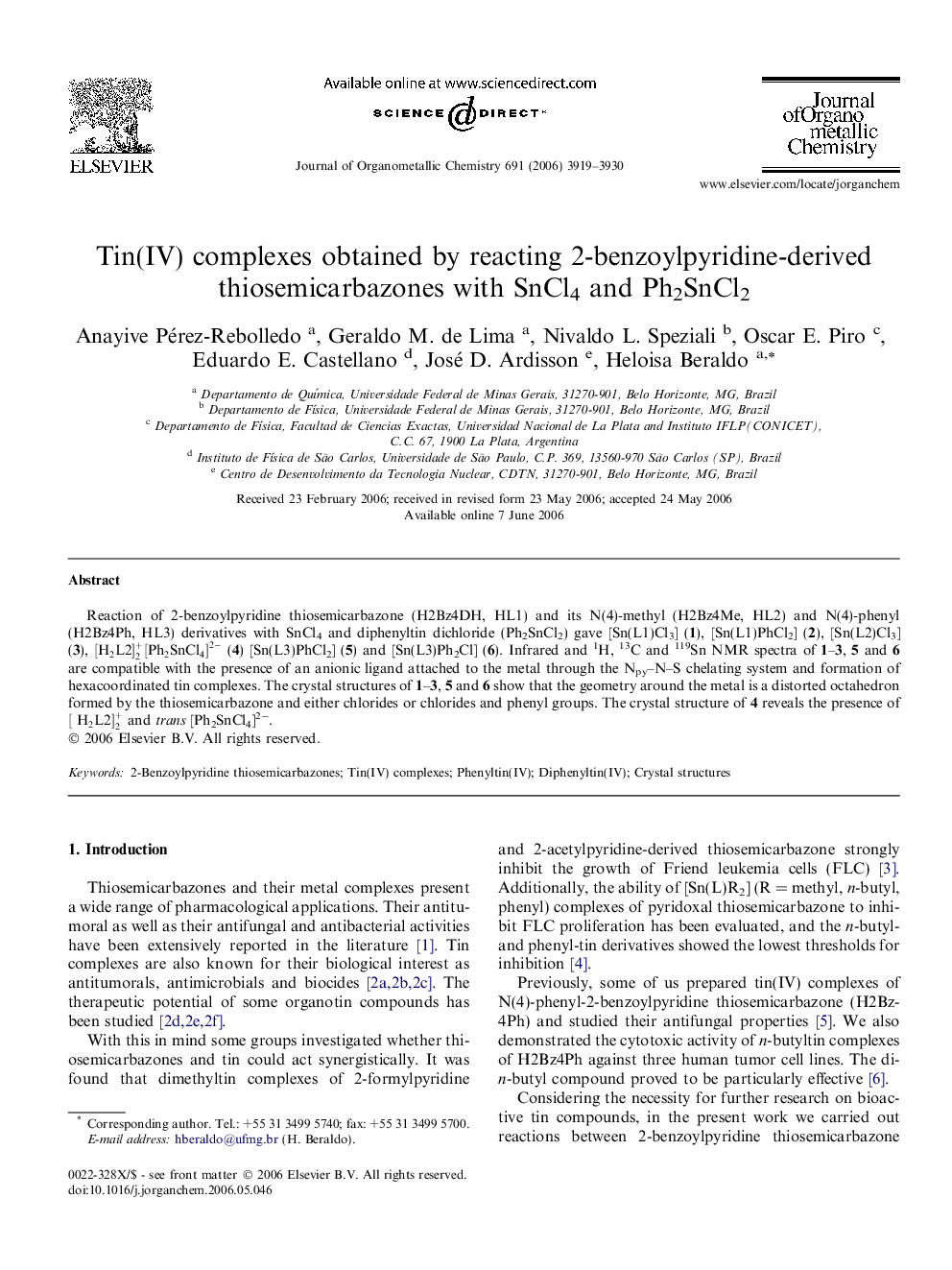| Article ID | Journal | Published Year | Pages | File Type |
|---|---|---|---|---|
| 1326978 | Journal of Organometallic Chemistry | 2006 | 12 Pages |
Reaction of 2-benzoylpyridine thiosemicarbazone (H2Bz4DH, HL1) and its N(4)-methyl (H2Bz4Me, HL2) and N(4)-phenyl (H2Bz4Ph, HL3) derivatives with SnCl4 and diphenyltin dichloride (Ph2SnCl2) gave [Sn(L1)Cl3] (1), [Sn(L1)PhCl2] (2), [Sn(L2)Cl3] (3), [H2L2]2+[Ph2SnCl4]2- (4) [Sn(L3)PhCl2] (5) and [Sn(L3)Ph2Cl] (6). Infrared and 1H, 13C and 119Sn NMR spectra of 1–3, 5 and 6 are compatible with the presence of an anionic ligand attached to the metal through the Npy–N–S chelating system and formation of hexacoordinated tin complexes. The crystal structures of 1–3, 5 and 6 show that the geometry around the metal is a distorted octahedron formed by the thiosemicarbazone and either chlorides or chlorides and phenyl groups. The crystal structure of 4 reveals the presence of [H2L2]2+ and trans [Ph2SnCl4]2−.
Graphical abstractReaction of 2-benzoylpyridine thiosemicarbazone (H2Bz4DH, HL1) and its N(4)-methyl (H2Bz4Me, HL2) and N(4)-phenyl (H2Bz4Ph, HL3) derivatives with SnCl4 and diphenyltin dichloride (Ph2SnCl2) gave [Sn(L1)Cl3] (1), [Sn(L1)PhCl2] (2), [Sn(L2)Cl3] (3), [H2L2]2+[Ph2SnCl4]2- (4) [Sn(L3)PhCl2] (5) and [Sn(L3)Ph2Cl] (6). The crystal structures of the six tin(IV) complexes have been determined.Figure optionsDownload full-size imageDownload as PowerPoint slide
